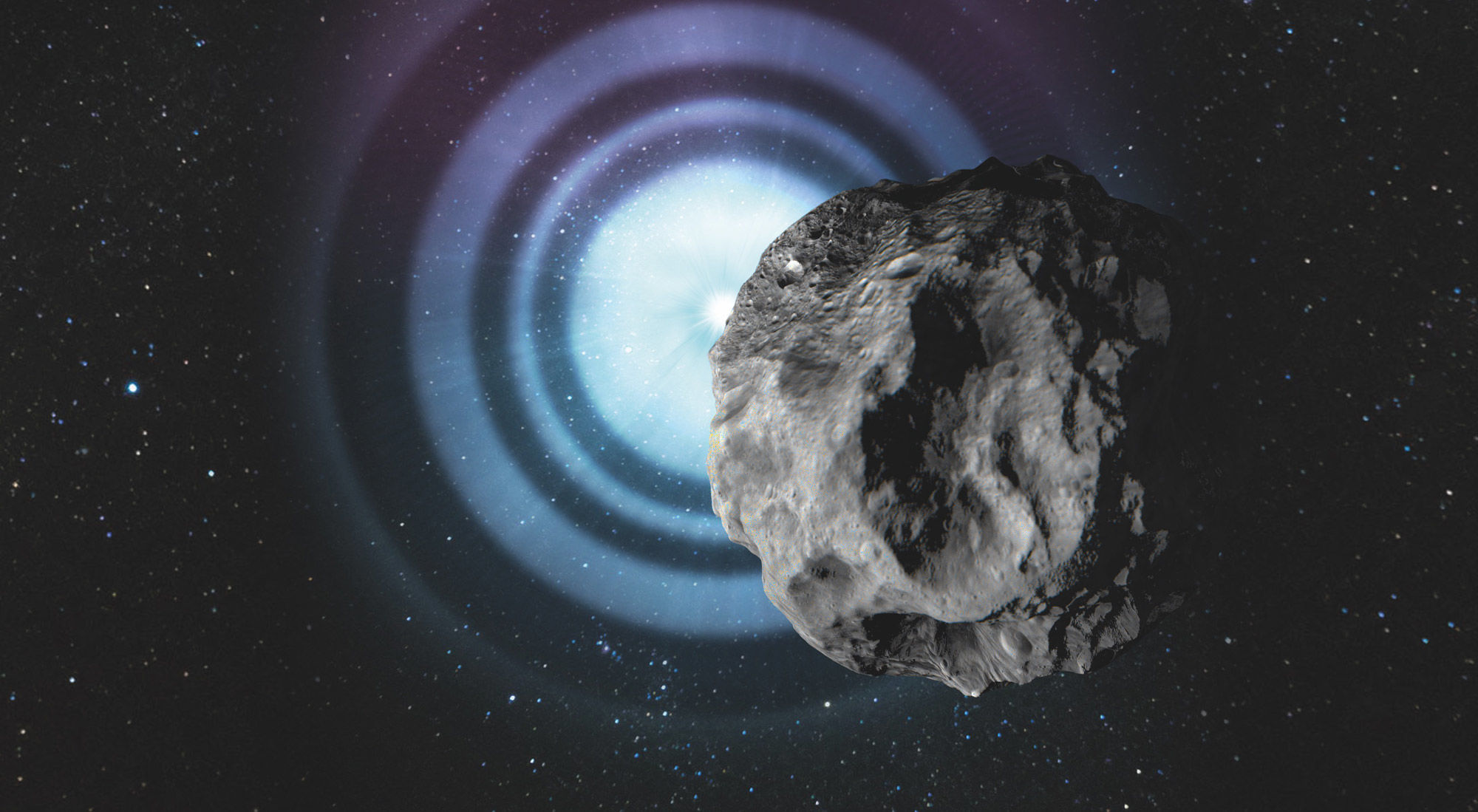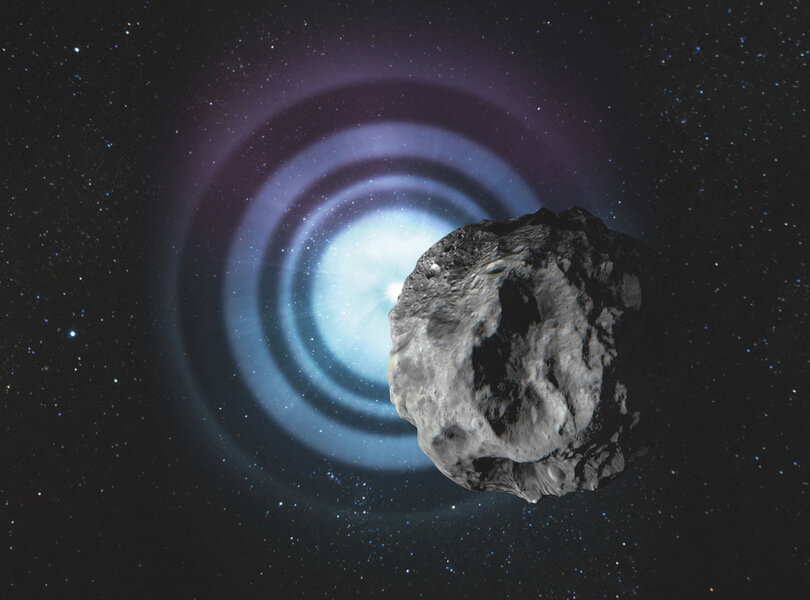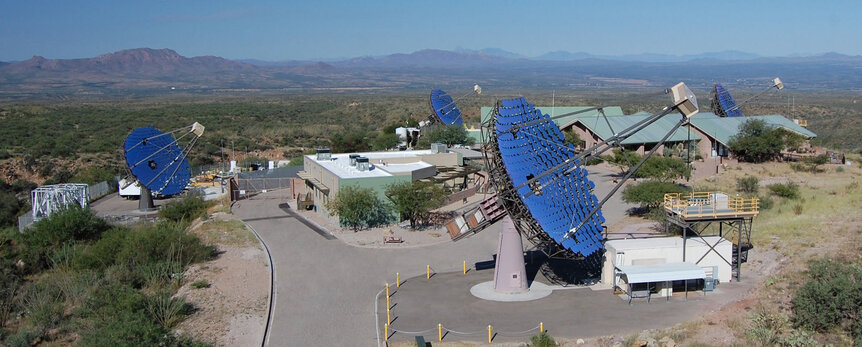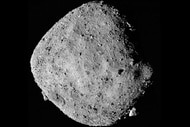Create a free profile to get unlimited access to exclusive videos, sweepstakes, and more!
How can you measure a star's size? Wait for an asteroid to block it.

One of the things I like about science is how — if you know your tools well and are clever enough — it allows you to solve a problem that would otherwise seem impossible. Even more fun is when the method itself feels like a Rube Goldberg machine *.
Here’s the deal.
Astronomers really want to be able to know how big, physically, stars are. Our understanding of how stars behave (like how they shine, how hot they are, how bright they are, and even (especially) how big planets are that are orbiting them) depends a lot on how big they are.
Now, you can figure this out if you know how far away they are and how big they appear to be. A little high school trig solves that problem easily. But how do you measure their apparent size, how big they seem to be in the sky?
Stars are big objects, millions of kilometers wide, but (except for the Sun) they’re inconveniently located trillions or quadrillions of kilometers away. That makes them look very small. For example, one of the stars in the Alpha Centauri system (the closest star system to us) is about the same physical size of the Sun. But it’s also nearly 270,000 times farther from Earth than the Sun is, so it only looks 1/270000 times the size. That makes it only about a millionth of a degree across — far too small to resolve even using Hubble. And that’s the closest star.
But there’s another way. Instead of measuring the star’s size directly, you can wait for some object to pass in front of it, and see how long it takes the star’s light to fade. If you know how fast the object moves, you use that to figure out the star’s size.
You can do this with the edge of the Moon, but there are lots of issues with that that limit the accuracy. However, there are other solid objects in the solar system that do this too: asteroids!
The problem there is that asteroids are small and relatively far away from us, so the odds of seeing one passing in front of a star aren’t that high. Worse, if you want to use a big, unmovable telescope, that reduces the chance even more.
But it is possible, and some astronomers did just that. I think my favorite part of all this, too, is that they used a telescope designed to do something completely different!
In southern Arizona there’s an observatory called VERITAS: the Very Energetic Radiation Imaging Telescope Array System. It consists of four separate telescopes, and each of those telescopes is itself made up of a collection of 350 smaller mirrors, each about 60 centimeters across.
The telescopes are designed to look for brief flashes of light in the sky when very energetic gamma rays and cosmic rays from space slam into our atmosphere. When these hit an atom or molecule of air, they create a shower of subatomic particles that move faster than light in air, creating a sort-of optical shock wave called Cherenkov radiation. This creates a detectable flash of light that can be used to learn more about such interesting objects as black holes, exploding stars, and so forth.
The thing is, that makes VERITAS very sensitive to faint sources, which means it can take really short exposures of stars. That’s important, because an asteroid passing in front of a star only takes about a tenth of a second to block it! So if you can take very rapid exposures you can actually measure dimming of starlight accurately.
But there’s a catch. A star doesn’t just fade away, it actually fluctuates in brightness, up and down, brightening and dimming rapidly as it gets blocked out. That’s because of a phenomenon called diffraction. Under these circumstances, light behaves like a wave, and when it passes by something with a sharp edge the waves interfere with each other and change the way they behave (not to get into an inception of analogies, but this is like when you move back and forth in a bathtub, and the waves can add to each other causing water to slosh out of the tub).
But that’s OK! The physics of how the light behaves depends on the apparent size of the star, so by measuring that behavior very carefully, the math can be turned around to calculate just how big the star is in the sky.
Knowing this, a team of astronomers determined that, in 2018, two different asteroids would block (or as astronomers call it, occult) two different stars. On February 22 asteroid (1165) Imprinetta occulted the star TYC 5517-227-1, and then on May 22 (201) Penelope occulted TYC 278-748-1. Both stars were bright enough to allow VERITAS to take very rapid exposures: 3 milliseconds each for the first occultation, and 0.4 ms for the second.
Here’s what they saw for Imprinetta occulting TYC 5517-227-1:
Because there are four telescopes there are four measurements (labeled T1 – T4). As you can see, the star whipped up and down in brightness before dropping to zero. By fitting that measurement with known physics, they were able to get an apparent size of the star: 0.125 milliarcseconds (with about a 15% uncertainty). That’s an incredibly small angle; there are 3600 arcseconds in a degree, and the Moon for example is about 1800 arcseconds in size on the sky. This star’s apparent disk is so small it’s like seeing a U.S. quarter from 40,000 kilometers away!
The star’s distance is known to be 2,670 light years, so that makes its actual, physical diameter about 11 times that of the Sun. That’s a big star! In fact, follow up observations showed it to be an orange star, slightly cooler than the Sun. That means this must be a red giant, a star that was once like the Sun but is at the end of its life, now swollen and huge. This was not known before these observations; no one knew if this was a normal star just churning away, or one nearer the end of its life. Now we know.
The second star VERITAS observed turns out to have an apparent diameter of 0.094 milliarcseconds, and given its distances of 700 light years, it turns out to be about 2.2 times the size of the Sun. It has the same temperature as the Sun, so this means it must be a subgiant, a star nearing the end of its life, heading toward becoming a red giant in the next few million years or so.
That is so cool.
Interestingly, the astronomers calculate that from a given site on Earth, roughly 5 stars bright enough to perform this measurement are occulted by asteroids every year. You can’t pick the stars, unfortunately — orbital mechanics does that for you — but this is still a decent number. And it’s not that hard to make the measurement if you have the right equipment. VERITAS has an advantage because it’s big, is used just to stare at big portions of the sky anyway, and has four telescopes to work with, giving you some redundancy. And while other observatories could do this, it’s a low priority for big ones compared to the other science they do.
Still, it’s pretty neat we can do this at all, and as time goes on I bet the technique will improve. I wonder what other observatories will give this a try… and what other interesting low-level but important science can be done when we think a little differently?
I bet Rube Goldberg would be proud.
*If you’re unfamiliar with this, just think of any ridiculously overelaborate series of contraptions Wile E. Coyote used to try to catch the roadrunner and you’ll get the idea.


















